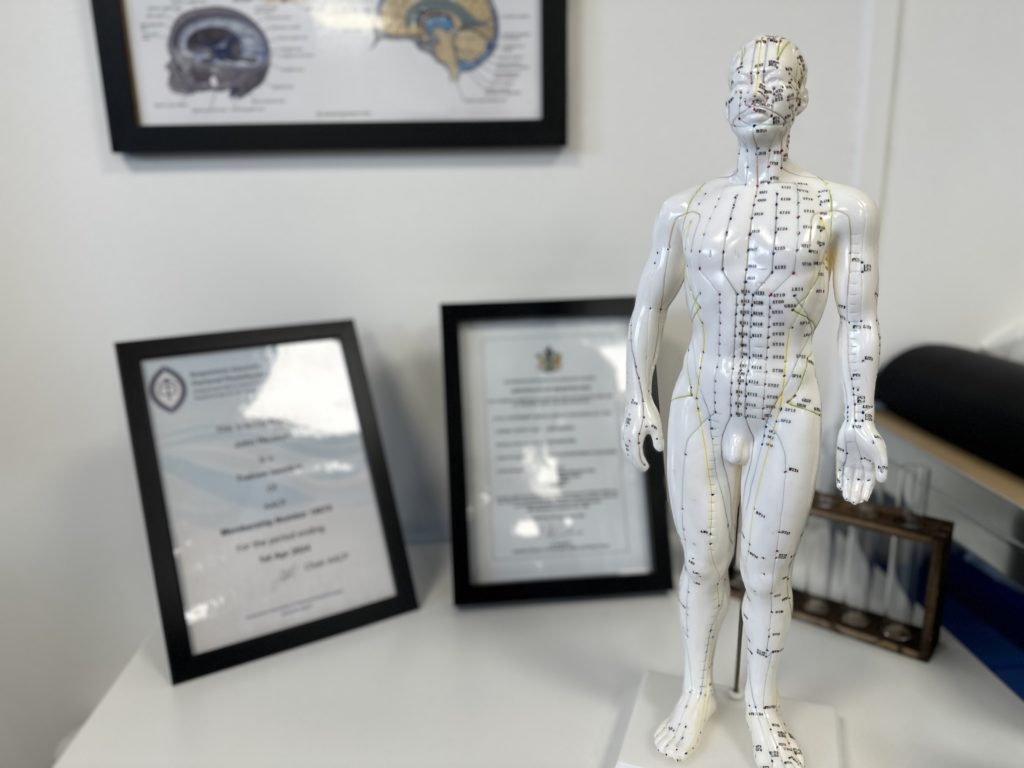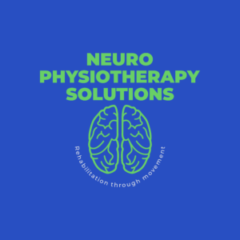
Acupuncture is one of the many skills used within physiotherapy as an integrated approach to the management of pain and inflammation and as a means of stimulating the body’s own healing chemicals in order to aid recovery and enhance rehabilitation.
Acupuncture within physiotherapy is implemented in accordance with clinical and research evidence. Western medical acupuncture was later derived from Traditional Chinese Medicine [TCM] which is an ancient system of medicine which dates as far back as 1000BC. TCM founded the concept of treating specific points along the body where unseen energy pathways could be stimulated with a needle to effect energy (qi) within the body in order to support the body back to optimal health.
In order for the body to work in harmony there are a number of systems which must be healthy and well balanced. Acupuncture treatments can aid in restoring the body back to health (homeostasis). This is achieved by your clinician understanding your medical history in order to prescribe a treatment plan to treat the source of imbalance with the correct acupuncture points.
The body has an innate ability to self repair. the use of Acupuncture, Acupressure or Electro-Acupuncture enhances these natural self repair mechanisms to enhance recovery and improve repair timeframes. Acupuncture alsos works in conjunction with other physiotherapy modalities, such as exercise and conditioning.
Acupuncture needles stimulate the flow of energy, known as Qi [pronounced ‘chee’] which circulates in pathways (meridians) within the body. The Qi circulates and connects the deeper tissues and organs of the body with the more superficial layers and the skin. In a healthy body, a balance exists between these different systems, both the superficial and deeper levels. An imbalance can however negatively effect these systems and cause a host of symptoms and challenges. Acupuncture can positively influence these imbalances by the insertion and stimulation of needles within the body and restore the balance. If injury, disease, emotional trauma or infection occurs, the natural flow of energy/Qi within the pathways/meridians are affected. Interruptions in the energy pathways can cause a stagnation, much like putting a cork in a bottle and this can result in pain and inflammation. Using acupuncture in this case would free the stagnation and restore the free-flow of energy, reducing pain and eradicating inflammation.
Conventional
Conventional Acupuncture involves the use of single use, pre-sterilised, disposable needles of varying widths, lengths and materials that pierce the skin at the Acupuncture points. The Physiotherapist will determine the locations of the Acupuncture points, based upon the assessment of the cause of the imbalance. A number of needles may be used at each treatment and these are typically left in position for some 20-30 minutes before being removed.
Trigger point Acupuncture may also be used to facilitate relaxation in specific muscles following trauma such as whiplash injury; for longer term unresolving muscle pain such as repetitive strain injury (RSI) or as a means to obtain increased muscle length in order to aid stretch and rehabilitation such as sports injuries . Here the needle is placed into the affected muscle until it is felt to relax under the needle and then removed. Trigger point needling is often much quicker and therefore does not require the 20-30 minute treatment time.
Electro-Acupuncture
Following the detailed physiotherapy assessment, inserted needles can be coupled to the electrodes of an electro-acupuncture apparatus. These units are designed to deliver variable amplitudes and frequencies of electrical impulses. Low frequency electro-acupuncture is intended to contribute to the mechanism of pain reduction, especially stimulating chemicals from the brain which will aid analgesia, relaxation and sleep.
It is particularly useful in the more chronic pain problems and sits against a background of research to support its use. Your Physiotherapist may use TENS machines over specific acupuncture points in order to help this mechanism and enhance the pain modulation.

Acupuncture is one of the many skills employed within physiotherapy as part of an integrated approach to treat pain, inflammation and related conditions. Physiotherapists base their treatments on scientific research and clinical evidence. There is an increasing number of research publications both in the UK and worldwide highlighting the effectiveness of acupuncture when compared to other treatment modalities, such as opioids and exercises.
The Evidence
A selection of recent research projects showed the following:
– A 2012 UK study of a number of research projects on acupuncture for osteoarthritis in the knee concluded amongst others: “…most studies were of acupuncture (11 trials) or muscle-strengthening exercise (9 trials); both interventions were statistically significantly better than standard care, with acupuncture statistically significantly better than muscle-strengthening exercise…” and “…acupuncture can be considered as one of the more effective physical treatments for alleviating osteoarthritis knee pain in the short term.” For the full article please click here.
– An extensive UK project analysing the safety of acupuncture in 2006 concluded: “In conclusion, acupuncture is a very safe intervention in the hands of competent practitioners.” For the full article please click here.
– A study of Acupuncture for Patients with Chronic Neck pain from 2006 concluded: “Treatment with acupuncture added to routine care in patients with chronic neck pain was associated with improvements in neck pain and disability compared to treatment with routine care alone.” For the full article please download here.
For information on the safety of acupuncture, please click here.
Is Acupuncture Safe?
Acupuncture is considered a very safe treatment option when carried out by fully qualified professionals. As an AACP member, I have completed comprehensive training and I am fully qualified/insured to treat in addition to my chartered physiotherapist status.
Treatment needles are sterile and single use, disposed of after each use in a suitable sharps disposal unit.
Acupuncture can be considered safe when practised by a member of the Acupuncture Association of Chartered Physiotherapists (AACP) because of the strict hygiene guidelines that must be adhered too. In addition to this, all AACP members are required to undertake continued professional training which I must evidence annually in order to maintain my membership.
Are there any side effects?
Generally side effects are non-existent or confined to slight bruising. Possible side effects may include: fatigue, light headedness, bruising, localised blood spotting, tenderness or redness where needles were inserted. If you feel tired after a treatment it is recommended that you do not drive or operate machinery and rest where possible. It is also advisable to drink plenty of water to keep hydrated.
If you have or are concerned about any possible side effects, please speak to your physiotherapist.
Can anyone have acupuncture?
There are certain health conditions that may stop you receiving acupuncture or mean that the treatment should be used with caution. It is important to let your physiotherapist know:
• If you have ever experienced a fit, seizure, faint or if you have epilepsy;
• If you have a pacemaker or any other electrical implant;
• If you have a bleeding disorder e.g. haemophilia;
• If you are taking anti-coagulants or any other medication;
• If you have damage to heart valves, or have any risk of active infections;
• If you are pregnant or trying to conceive;
• If you have a known metal allergy – specifically to stainless steel;
• If you have a needle phobia;
• If you have a known infection or poor skin condition in the area to be treated;
• If you have a deficient or weakened immune system;
• If you have diabetes;
• If you have low blood pressure;
• If you have been prescribed any medicine;
• If you have cold/flu symptoms or feel generally unwell.
